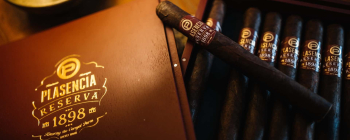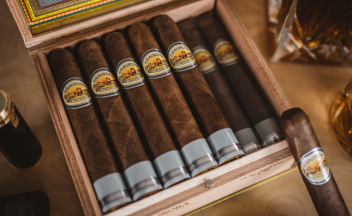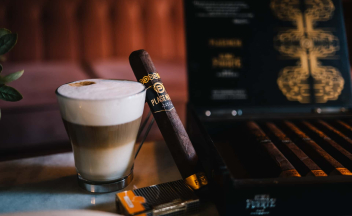
Storing Cigars
Great Cuban cigars require a humidor. Storing cigars correctly will make cigars even better.
If you’ve invested in delectable sticks you now need to know how to store cigars. Correct storage deepens their flavor, preserves their value, and improves their taste. In short, you need to know about humidors. These devices keep temperature and humidity consistent, to make sure your sticks’ wrappers never crack or grow mold.
But you don’t need a fancy cedar-lined humidor to keep your cigars in prime condition as they age. You can also make a DIY humidor or use a Ziploc as a quick fix. It’s easy to learn how to do it, making your sticks taste better and worth more.
Cigar Storage Basics
Learning how to store cigars is an integral part of keeping your investments safe and smokable. Since the very best cigars only get better with age, you need to learn how to store them.
The ideal temperature and humidity for storing cigars are 68˚F with 70% humidity. Various air temperatures hold different amounts of water. If your storage temperature is reduced by 1˚F, you need to add 1% more humidity.
If you store cigars in too moist an environment, you’ll get spongy cigars that fall apart and smoke badly. If it’s too dry, the wrapper becomes papery and loose, and the smoke will be bitter and harsh.
To keep your cigars in the perfect environment with the ideal amount of humidity, set your humidor to 68˚F with 70% humidity and keep a close eye on it, monitoring temp and humidity regularly. You can buy gauges to store alongside the cigars that give you precise measurements.
How Long Do Cigars Last?
Like those produced by Romeo y Julieta and Cohiba, the best cigars benefit the most from aging, as cheap sticks go off quickly. Aging won’t help the taste of the cigar if the stick is cheaply made.
Cigars are made of water and tobacco, and a perfectly balanced environment makes the flavors more complex.
Keep sticks from the same brands together, and look for a When you store cigars correctly you will age them in ideal conditions. Especially with high-quality Cuban sticks, the flavors deepen and become optimal around five years after purchase, but even a few months can do wonders for the taste.
Cigar rollers typically let sticks sit for three months and won’t send their hand-rolled products to tobacco shops until this period has elapsed. Some rolling houses age their sticks with the cellophane wrappers on, but this is counterproductive.
Humidor lined with cedar as it is naturally pest-resistant and helps to manage moisture.
Do Cigars Go Bad?
If sticks are left in an inappropriate environment, they go bad. If it is too dry or too damp, you can get split wrappers, stale tobacco, mold, or unproductive draws.
If you don’t take the time to learn how to store cigars, it doesn’t matter if you buy the very best brands on the market; they still can go bad. It would be a shame not to get the ultimate enjoyment out of a high-quality stick. With just a little time and effort, you can ensure your investment won’t be wasted.
Too damp in your humidor? Your sticks’ wrappers may be loose and wrinkly, and the cigar may go out quickly or offer unproductive draws. If it’s too dry in your humidor, the hand-rolled tobacco leaves will lose all their moisture, making them burn too quickly with harsh, bitter smoke. And if you don’t have a humidor, your cigars may be going bad as you read this.
How to Keep Cigars Fresh?
The most common kind of cigar storage device is a humidor. Still, since a humidifying device adds moisture into the air, it can be as simple as a few wet paper towels or sponges. Of course, these are not long-term practical solutions.
If you are serious about cigars, you need a worthwhile humidor, and the seal is an essential part. Without an air-tight seal, you haven’t bought a humidor; you’ve purchased a fancy box in which to store your sticks.
Many humidors use a cedar-lined box because the wood absorbs moisture well, and the cedar lends flavor to the sticks (you should also group brands so the flavors will marry). You can also use unfinished mahogany if you don’t like the cedar taste.
Humidors should be kept at 70% humidity with distilled water instead of tap water to avoid mold and other contaminants.
Mold on Cigars
There’s a difference between plume and mold on cigars; one is a sign of good aging and the other a sign of neglect. Luckily, it’s easy to spot mold and eradicate it if you catch it in time.
When you age your sticks correctly, you sometimes see a grayish powder on the wrapper and label.
This is entirely normal. This substance is called plume, and it’s an assurance that the cigar is aging correctly. The phenomenon is caused by oil rising to the surface of the wrapper and crystallizing.
Mold is toxic, not only damaging your cigar but also affecting your health if inhaled. Often bluish or greenish, mold can grow from excessive moisture or by using tap instead of distilled water in your humidor. Distilled water is guaranteed to be free from any pathogens or unknown ingredients.
If you spot mold, quickly empty the cigars from your humidor and throw away the cigars that are affected the worst. Clean the inside of your humidor with a slightly damp cloth and let the air dry.
DIY Humidors
Although a humidor with an excellent seal and lined with appropriate wood is ideal, you may want to put your investment toward your cigars, not the humidor.
If this is the case, you can make a humidor with a few simple materials, including a large Tupperware container, a sponge inside a salt shaker, a hygrometer, and your sticks.
A piece of cedar leftover from a previous cab can also be cut to size to fit in your Tupperware to add flavor and control moisture. You can also use a wine cooler, an ice chest, or an ammo case as makeshift humidors.
The Tupperware is practical and useful, with a fantastic seal to keep air out. The sponge acts as the humidifying agent, and the holes on top of the salt shaker control the humidity evenly.
You never want your sticks to touch the sponge or any dehumidifying agent. Place the cedar in the base of the Tupperware, the saltshaker in the center, and stack the sticks neatly around the perimeter.
How to Store Cigars Without a Humidor
Imagine you have a handful of Cohibas and want to let these beauties age into incomparable sticks, but you don’t have time or the equipment for a DIY humidor. So what should you do?
It’s simple enough to store your cigars without a humidor (although you risk them drying out or growing mold).
To keep your cigars in smokable condition, use a Ziploc bag to protect them from the exterior environment. A humidification packet dampened sponge or moist paper towel can work to keep your sticks palatable until you can get them to a more controlled environment. A Ziploc bag has an impressive seal, but a plastic bag with a sponge inside is not a permanent solution.
If you’re using this temporary method, keep the sticks in their cellophane. If that’s not possible, try not to let the cigars touch the humidifying agent.
What Cigars to Store
Humidors mimic the Cuban climate where the best cigars are rolled, so Cuban sticks benefit the most from a humidor’s carefully controlled environment. At Swiss Cuban Cigars, we only carry the best – Cohiba, Romeo y Julieta, Hoyo de Monterrey, and more. Visit our online store, explore more tips and advice on how to get the best experience from your sticks.
Apr 10, 2025
Last Modified: Apr 10, 2025





